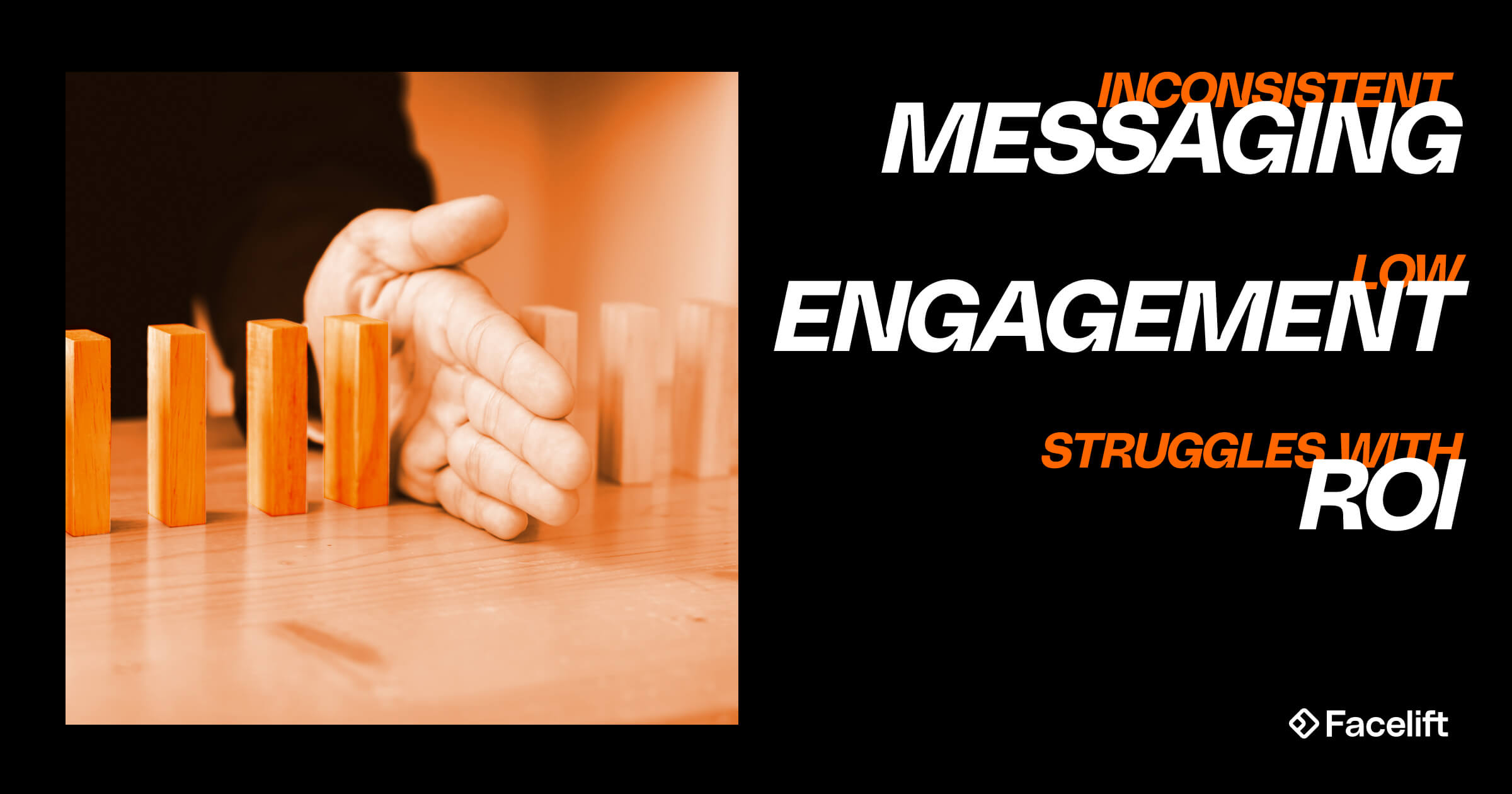Your social media feeds are buzzing. Posts are going out daily, your team is busy, and the likes and comments are rolling in. But here’s the million-dollar question (for some companies, literally): is all this activity driving real business results—or are you just spinning your wheels?
For many organizations, their social media strategy might feel productive on the surface but hides deeper inefficiencies that limit growth. Without a cohesive, outcome-driven approach, even the busiest teams can find themselves stuck in a cycle that's going nowhere.
Here’s how to recognize if your social media strategy is holding you back—and what to do about it.
Signs Your Social Media Strategy Is Stuck
1. Your Content Feels Like Churn
Are you creating content for the sake of it? Posting daily might seem like the goal, but you're not maximizing your efforts if there’s no clear purpose behind each post.
Ask yourself:
- Does each post support a campaign, goal, or other business objective? Does it really? You should be able to identify how, specifically.
- Are you focused on quality over quantity? Less is often more when the algorithms are deciding whether to show your content to the people who matter.
What to do:
Shift your focus from volume to value. Make sure that the content calendar you're using is closely tied to real business goals and audience needs rather than arbitrary posting schedules.
2. You’re Measuring the Wrong Metrics
Likes and shares are nice, but are they helping your business grow? Too many strategies focus on engagement metrics that don’t directly impact sales, customer retention, or other measurable outcomes.
Look for signs like:
- Reporting that prioritizes vanity metrics (e.g., likes, follower growth) over actionable ones (e.g., conversions, customer satisfaction). These may look good on a report, but a million new followers that never engage is far worse than a hundred who convert.
- Leadership asking, “What’s the ROI here?”—and your team not having an answer. This is embarrassing and seems like a no-brainer, but it's very common since social media activities often slide under the radar at companies. Social media orchestration relies on the tangible benefits to ROI, so you need to dig deep.
What to do:
Reevaluate the KPIs that really matter to your overall business objectives. For example, if your goal is lead generation, track link clicks or form submissions rather than likes. Tie metrics directly to business outcomes.
3. Your Strategy Is Reactive, Not Proactive
Do you jump on trends without a clear connection to your brand? Are your campaigns built on short-term ideas rather than long-term plans? Are you thinking a year ahead?
Reactive strategies often result in:
- Inconsistent messaging that confuses your audience.
- Missed opportunities for building sustained engagement or loyalty.
What to do:
Plan campaigns around your current overarching business objectives. Save trend-jumping for when it aligns with your goals—and only if it fits your brand voice. Not everyone needs to do this month's viral TikTok challenge.
4. You’re Stretched Too Thin Across Platforms
Being on every platform sound impressive, but spreading your resources too thin often means doing a mediocre job everywhere instead of excelling somewhere. Companies often suffer from FOMO when a new platform becomes super prominent, most recently TikTok. TikTok can be a great platform for a lot of companies, but it's still not the place to be for everyone. Don't jump on board just because of the buzz - it needs to align with your organizational goals.
Ask yourself:
- Are you active on platforms your audience isn’t using?
- Is your team overwhelmed trying to manage too many accounts?
What to do:
Prioritize platforms where your audience is most active and engaged. Focus your efforts on creating meaningful content for those channels instead of trying to cover them all. It's okay to drop accounts if they're unused or not giving you a positive ROI.
Why Modern Strategies Embrace Orchestration
If these challenges sound familiar, your strategy likely lacks alignment. This is where social media orchestration can help. Unlike traditional social media management, orchestration connects teams, tools, and goals into a unified system.
- Alignment: Ensure everyone works from the same playbook, from marketing to customer service to regional teams.
- Purpose-Driven Planning: Create campaigns that align with your business objectives, not just platform trends.
- Clear Reporting: Use unified analytics to measure real outcomes, like leads, sales, and customer satisfaction.
How to Refresh Your Strategy
If your current approach feels more like a patchwork than a plan, it’s time to refresh.
1. Perform a Social Media Audit:
Start by mapping your accounts, analyzing metrics, and assessing workflows. We made a guide to auditing your social media strategy here.
2. Align Goals and Teams:
Bring stakeholders together to define clear objectives and assign roles.
3. Invest in the Right Tools:
Consider orchestration platforms like Facelift, which streamline planning, publishing, and analytics into one cohesive system.
Don’t Settle for “Good Enough”
Social media has evolved, and so should your strategy. If you recognize these signs in your current approach, don’t worry—you’re not alone. The key is identifying where you’re stuck and taking steps to move forward.






